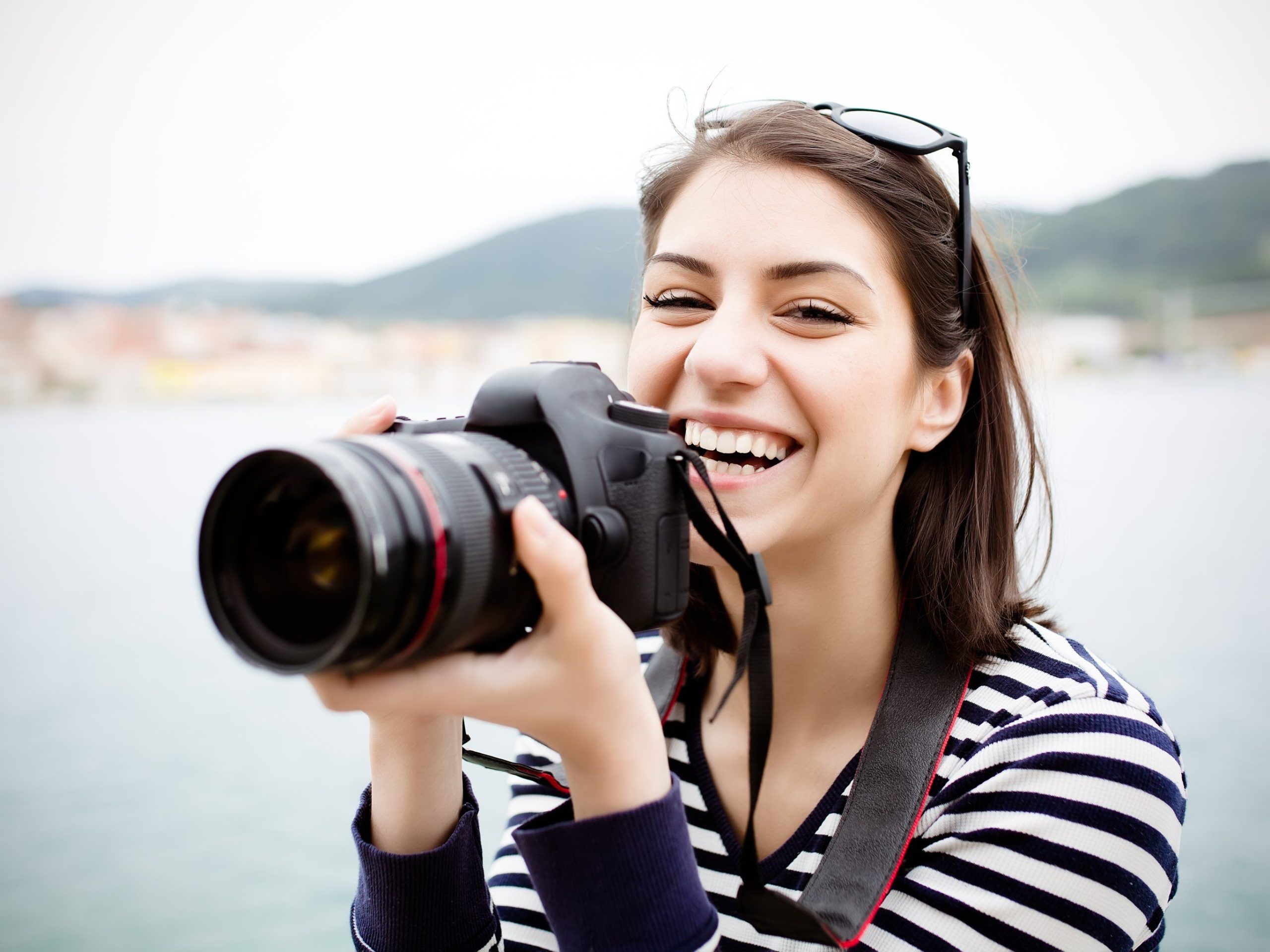 Understanding composition is a vital skill for any photographer looking to capture visually appealing photos. By learning the rule of thirds and other composition techniques, you can elevate your images to new heights. Additionally, experimenting with different angles, perspectives, and framing can help add depth and interest to your photographs.
Understanding composition is a vital skill for any photographer looking to capture visually appealing photos. By learning the rule of thirds and other composition techniques, you can elevate your images to new heights. Additionally, experimenting with different angles, perspectives, and framing can help add depth and interest to your photographs.
The rule of thirds is one of the fundamental principles of composition. It involves dividing your image into a grid of nine equal parts, created by two horizontal and two vertical lines. The idea is to place your subject or key elements along these lines or at the intersection points, rather than in the center of the frame. This placement creates a more balanced and visually pleasing composition. By following this rule, you can create a sense of movement, guiding the viewer’s eye through the image.
In addition to the rule of thirds, there are other composition techniques you can explore. One such technique is leading lines. These are lines within the frame that lead the viewer’s gaze towards the subject, creating a sense of depth and movement. Leading lines can be found naturally, such as a road or a fence, or they can be created deliberately by positioning objects in your frame.
Another technique to consider is framing. By using elements within the scene to frame your subject, you can add depth and interest to your photograph. This could be anything from a doorway or a window to branches or foliage. Framing helps draw attention to the subject and provides a context for the image, making it more engaging for the viewer.
Experimenting with different angles and perspectives can also make a significant impact on your photographs. Instead of shooting from eye level, try crouching down low or taking shots from above. Changing your perspective can provide a fresh and unique view of your subject, making your images stand out. Don’t be afraid to get creative and think outside the box when it comes to angles and perspectives.
Ultimately, understanding composition and experimenting with different techniques can transform your photographs from ordinary to extraordinary. Whether you’re photographing landscapes, portraits, or still life, composition plays a crucial role in creating visually appealing images. So, take the time to learn the rule of thirds and other composition techniques, and don’t be afraid to step out of your comfort zone and explore different angles and perspectives. With practice and experimentation, you’ll soon be capturing stunning photos that captivate and inspire.
Master Lighting: Pay attention to lighting conditions and understand how it can enhance or detract from your photos. Experiment with natural light, golden hour, and artificial lighting techniques to create different moods and effects in your photographs.
Lighting plays a crucial role in photography, as it has the power to transform an ordinary image into a captivating masterpiece. Whether you are shooting outdoors or in a controlled environment, understanding the impact of lighting can significantly enhance the quality of your photographs. By experimenting with various lighting techniques, such as natural light, golden hour, and artificial lighting, you can create stunning visual effects that will leave a lasting impression on your viewers.
One of the first things you should pay attention to when shooting is the lighting conditions. Natural light, for instance, can vary throughout the day, affecting the mood and appearance of your subjects. Early morning and late afternoon are often referred to as the golden hour, as the sun’s rays are softer, casting a warm and flattering glow. This time of day provides a magical lighting opportunity, ideal for capturing portraits, landscapes, or any subject you wish to emphasize. Experiment with different angles and positions to make the most of this enchanting light.
However, natural light is not always readily available or controllable, especially when shooting indoors or during overcast days. This is where artificial lighting techniques come into play. With artificial lighting, you have complete control over the intensity, direction, and color temperature of light. Studio lighting setups, for example, consist of multiple light sources, each serving a specific purpose. Key lights provide the primary illumination, fill lights soften shadows, and accent lights add depth and dimension. By mastering artificial lighting, you can achieve professional-looking results, even in challenging environments.
Understanding the effect of lighting on your subjects is equally important. While harsh lighting can create dramatic shadows and high contrast, it may not always be desirable. Soft, diffused light can help to eliminate harsh shadows and create a more flattering appearance. This can be achieved by using reflectors, diffusers, or by shooting in shaded areas. By paying attention to the lighting conditions and experimenting with different techniques, you can ensure that your subjects are well-lit and visually appealing.
Moreover, the mood and atmosphere of a photograph can be greatly influenced by lighting. Warm, golden light can evoke feelings of comfort and nostalgia, perfect for capturing intimate moments or beautiful landscapes. Cooler tones, on the other hand, can create a sense of mystery or drama, ideal for architectural shots or capturing a sense of adventure. By using lighting to your advantage, you have the ability to convey emotions and tell compelling stories through your photographs.
In conclusion, mastering lighting techniques is an essential skill for any photographer. By understanding how lighting can enhance or detract from your photos, and by experimenting with natural light, golden hour, and artificial lighting, you can create captivating images that leave a lasting impact. So, pay close attention to lighting conditions, be it from the sun, studio lights, or other sources, and use it to your advantage. With practice and experimentation, you will unlock endless possibilities to create stunning photographs that truly stand out.
Use the Right Equipment: Invest in a good camera and lenses that suit your photography style and needs. Understand the capabilities of your equipment and learn how to use them effectively. Additionally, consider using tripods, filters, and other accessories to enhance your photography.
Photography is an art form that allows us to capture moments, express emotions, and tell stories through images. To create captivating photographs, it is essential to use the right equipment. Investing in a good camera and lenses that align with your photography style and needs will significantly impact the quality of your work.
When choosing a camera, consider factors such as resolution, sensor size, and ISO range. Higher resolution cameras tend to capture more detail, while larger sensors allow for better low-light performance and depth of field control. Understanding the capabilities of your camera will enable you to maximize its potential and capture stunning images in any situation.
Equally important is selecting the appropriate lenses. Different lenses offer various focal lengths, aperture ranges, and optical qualities. Wide-angle lenses are ideal for landscape photography, allowing you to capture expansive scenes with great detail. On the other hand, telephoto lenses are perfect for wildlife or sports photography, enabling you to zoom in and capture distant subjects.
Once you have your equipment, it is vital to familiarize yourself with its features and functions. Read the camera’s manual, experiment with different settings, and practice using it in various scenarios. Understanding the camera’s capabilities will help you make informed decisions while shooting and allow you to adapt to different lighting conditions or subjects.
In addition to the camera and lenses, consider using accessories like tripods, filters, and remote shutter releases. Tripods provide stability and eliminate camera shake, especially useful in low-light situations or when photographing long exposures. Filters, such as polarizers or neutral density filters, can enhance colors, reduce reflections, or control the amount of light entering the camera.
Furthermore, remote shutter releases allow you to capture images without physically touching the camera, reducing the risk of introducing vibrations. These accessories can significantly improve the quality and versatility of your photography, enabling you to explore creative techniques and achieve professional results.
Investing in the right equipment and understanding its capabilities is crucial for any photographer. It allows you to capture images that reflect your vision and convey your message effectively. Remember that equipment is just a tool, and it is your creativity, skill, and dedication that ultimately make a photograph remarkable. So, embrace your equipment, experiment, and let your passion for photography shine through your images.
Finding Unique Perspectives: When it comes to photography, finding unique and interesting perspectives can make all the difference in capturing captivating images. While everyday scenes may seem ordinary at first glance, it’s your creativity and ability to explore different angles that can truly transform them into something extraordinary.
One way to achieve this is by experimenting with various compositions. Instead of settling for the obvious, try to think outside the box and challenge yourself to capture subjects in fresh and unexpected ways. This might involve shooting from low angles, which can add depth and a sense of grandeur to your photos.
On the other hand, opting for high angles can offer a unique bird’s-eye view and allow you to emphasize patterns, shapes, and textures that may go unnoticed from a ground-level perspective. This technique works particularly well in urban environments, where you can capture the hustle and bustle of the city or the symmetry of buildings from above.
But don’t limit yourself to just low and high angles. Exploring unusual vantage points can lead to visually stunning photographs that stand out from the crowd. Consider climbing a tree, finding a rooftop, or even lying on the ground to capture scenes from perspectives not typically seen. This can provide a fresh take on familiar subjects, sparking intrigue and engagement.
Remember, the goal is to capture the essence of the scene in a way that resonates with your audience. By embracing unconventional angles, you can add a unique touch to your images, allowing viewers to see the world through your eyes.
Furthermore, experimenting with perspective is not only about finding physical vantage points but also about incorporating different lenses and focal lengths. Wide-angle lenses can exaggerate depth and create a sense of scale, while telephoto lenses can compress distances and isolate specific details. By understanding the characteristics of different lenses, you can effectively communicate your intended message through your photographs.
In conclusion, finding unique perspectives is the key to capturing visually stunning images that stand out from the crowd. By exploring different angles, compositions, and vantage points, you can transform ordinary scenes into extraordinary works of art. So, next time you’re out with your camera, don’t hesitate to get creative and experiment. Embrace the unexpected and let your unique perspective shine through your photographs.



